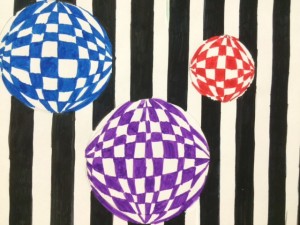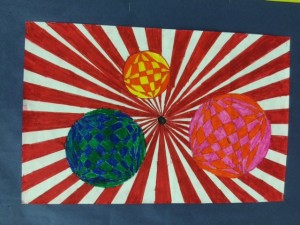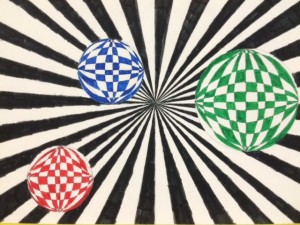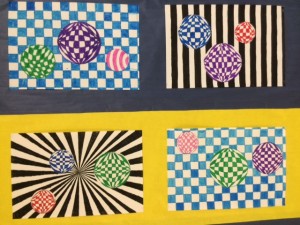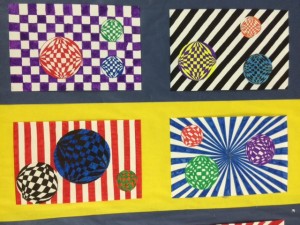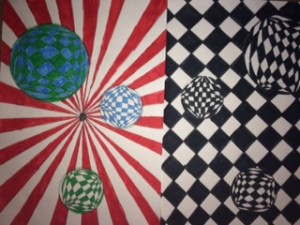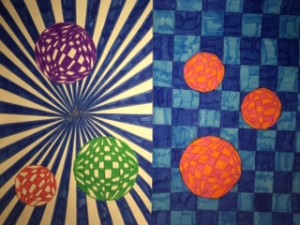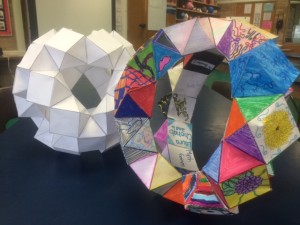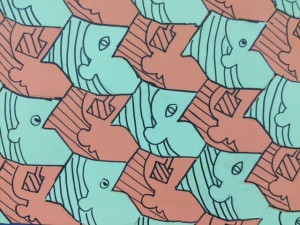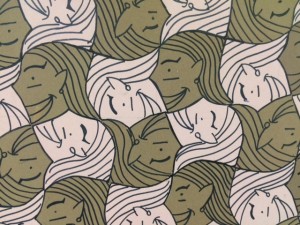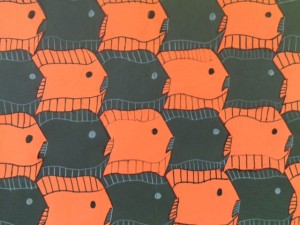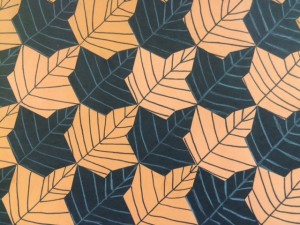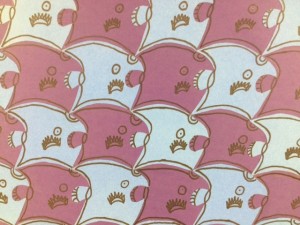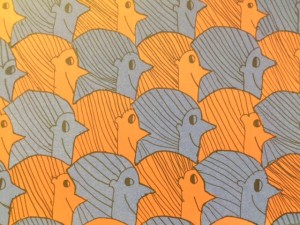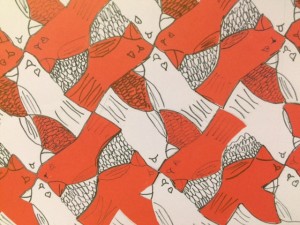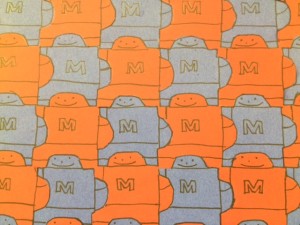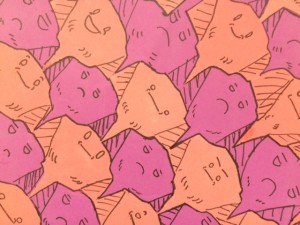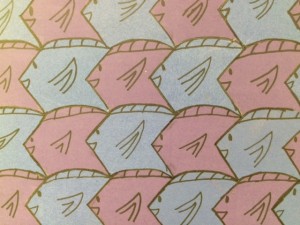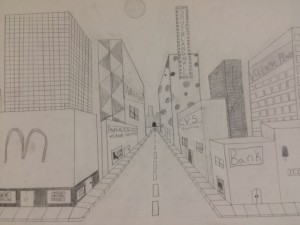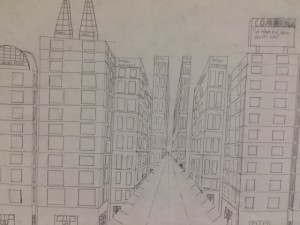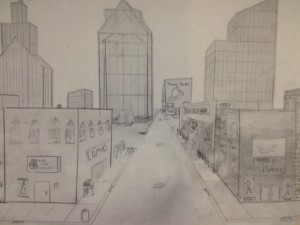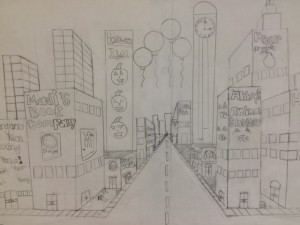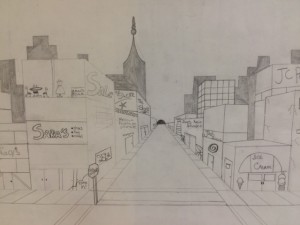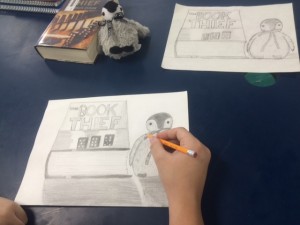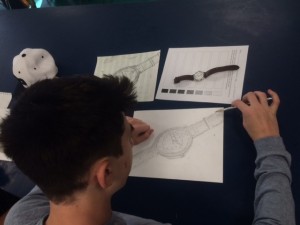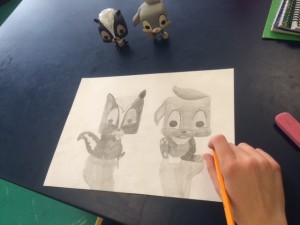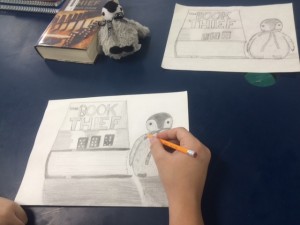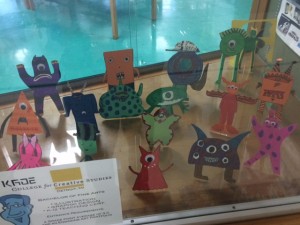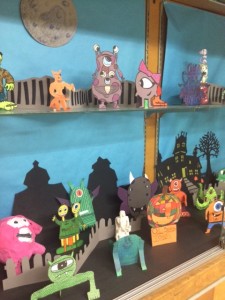I wanted to have students create one project that everyone in class could contribute a piece to. I wanted it to be the first project of the semester so I could launch the lesson by stating how important it is for a class to be unified in nature and how no one is more important than the whole of the class. The best way to fulfill our mission was by having each student decorate and glue up one square icohedron. Once complete, we glue 12 together end to end to create a ring (18″across) and then the second half creates the other ring, to complete the sphere. Geometry plus art equals awesome!
Author Archives: Mr. Kade
Intro to Art
Hello and welcome to Introduction to Art. This is a sixth grade class that is an exploratory course designed to get students exposure to many forms of art including 2 and 3 dimensional mediums. I see students every other day for this class, so we are able to create at least 9 projects from Feb. thru June. We will be using markers, watercolor paint, paper mache, clay, paper sculpture, etc. Attached to this post is the syllabus that can be used for reference. It was sent home today 2/4, is to be signed and brought back by 2/ 10.
3D Art Syllabus
Welcome to Semester 2 and three dimensional Art. In this class we’ll be exploring the concepts of creating art in many mediums such as clay, paper, cardboard, wire and paper mache. Attached to this post is the syllabus that covers the concepts and requirements of the class. Students will be taking this home today and It should be returned by Friday Feb. 5th for 10 points of credit.
Engineering for Kids
Please check out this link for a great after school opportunity for your student. It’s called Engineering for Kids!
TESSELLATION
Aside
A tessellation is a pattern consisting of identical shapes that nest together. This is very much like a tile floor, or various patterns on clothing. With this assignment, students were to use various math techniques to come up with a usable shape that can easily tessellate into a larger pattern. From there, students were to create a design on that shape, and then trace and cut out 12 identical shapes. After that, another piece of contrasting paper is used to build the pattern on, leaving each student with 24 shapes that nest together, creating their own unique tessellation!
7th & 8th Grade SHARK TANK
Package Design/ SHARK TANK! With this assignment, students were to research package design to see what makes various products desirable to consumers. They were then tasked with creating a specific product and then create a logo and package design to help “sell” their project. From there, we had the students “pitch the product” very much like the television show SHARK TANK. It was amazing to see students get involved with “selling” their ideas, and making connections between Art and the real world!
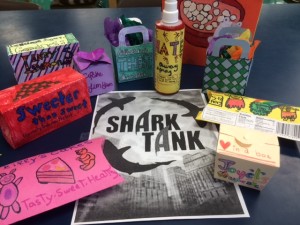
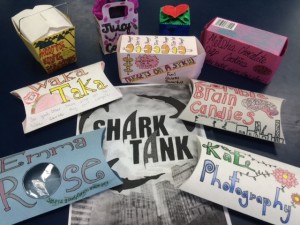
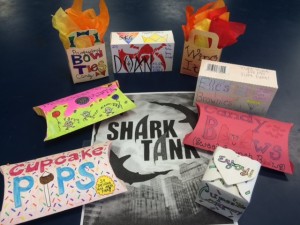
1 Point Perspective Drawing
The best way to get students to understand how to draw things that are real is to have them do exercises that help them understand how we see things in everyday life. Any item that you can see 2 sides of, you see in perspective. This assignment helps students to understand that. The first thing to do is to simply put a dot at the center of the page. That is our vanishing point, and all lines must go to that point on the horizon. From there, you must create the front side of a shape, in this case a rectangular “building”. From there, simply find all open corners of that shape that can go to the vanishing point and draw them going toward that point (stopping where you want your building to end). After that, simply add doors, windows, and signs, and you have a street!
Realistic Still Lifes 7th & 8th grade
Monsters Alive!
In this assignment, I had my 6th and 7th graders design and create paper monster characters that can stand up on their own. We were first inspired by watching some videos of employees working at PIXAR while creating the movie Monsters University. They talked about how they drew many ideas before refining it to a finished product that appeared to screen. Students were encouraged to create as many eyes, and arms as possible to create a character that could fit into the movie. We then had to make our monsters stand up, and we learned some 3D building techniques as well. Overall, a great job Smith students!
6th grade Optical Art
The objective of this assignment is to show students how a series of lines created in a certain planned succession can create an Optical Illusion. This effect is intensified with the placement of objects within a plane, and when the color is added. This combination of effects helps give the visual illusion of movement and depth on a two dimensional surface. These drawings were 12 x 18 inches and completed with marker.